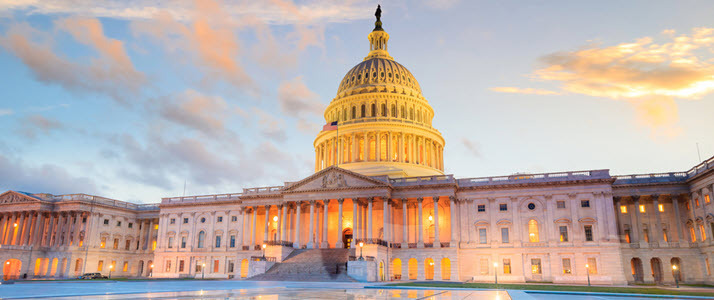SECURE 2.0 Act and the Future of Retirement Plans: Guidance for Plan Sponsors
Part of a series | SECURE 2.0 Act Insights

As SECURE 2.0 Act provisions begin to roll out, it's critical for plan sponsors to understand the impact on their retirement plans. Sort through the changes to learn what's to come — and what to expect.
The SECURE Act of 2019 brought significant change to retirement savings plans, encouraging more Americans to prepare for their future. And now the SECURE 2.0 Act, enacted on December 29, 2022, has added even more provisions to help Americans save through employer-sponsored plans.
While some provisions took effect on January 1, 2023, many will roll out over the next few years. But for plan sponsors and employees, it's important to understand the immediate plan changes and benefits, as well as the potential impact later on.
To ensure compliance, those affected may act now to align their retirement plans with the new legislation:
Start-up tax credit
Companies that don't offer a retirement plan as part of their overall compensation package may consider taking advantage of this new incentive. Small employers with up to 50 employees are now eligible to receive a credit covering 100% of administrative expenses (up to $5,000) for the first three years of a new plan. There's also an additional credit for employers with 100 or fewer employees that would help offset the cost of employer contributions to a retirement plan for up to $1,000 per employee. This credit is phased out over five years and is reduced for employers with more than 50 employees.
Automatic enrollment
Most employers who establish new plans after December 29, 2022, will be required to automatically enroll all eligible employees into their plan unless they opt out. Beginning in 2025, employers must enroll employees at a rate of at least three%, but not more than 10%. Plans must also increase contributions up to at least 10% but no more than 15% of pay. In addition, if participants are automatically enrolled, they must be allowed to withdraw their contributions and stop participating in the plan within 90 days.
Expanded catch-up contributions
As employees move closer to retirement age, they'll soon have the option to contribute more to their savings. Currently, participants 50 and older can contribute an extra $7,500 per year annually into their 401(k) account. This amount will increase to $10,000 per year starting in 2025 for participants 60-63. Additionally, catch-up provisions will be indexed for inflation.
Required Minimum Distributions (RMDs)
By extending the RMD date, participants now have more time to grow their retirement plans. This year, the age requirement to begin taking RMDs increases to 73. In addition, the penalty for not taking an RMD is reduced to 25% ( in some cases 10%). Beginning in 2024, the pre-death requirement to take minimum distributions for Roth 401(k) accounts will be eliminated; this matches the treatment of RMDs for Roth IRA accounts.
Student loan debt
Millions of people who have not been able to save for retirement due to student loan bills may start building their nest eggs in 2024. Under the new law, employers will be able to make contributions to their company retirement plan on behalf of employees who are paying student loans instead of saving.
Long-term, part-time employees
The first SECURE Act required that long-term, part-employees who worked between 500 and 999 hours for three consecutive years be eligible to participate in their company's retirement plan. Under the new law, that requirement is reduced to two years beginning in 2025 so employees can begin saving for their future earlier.
Saver's match
Beginning in 2027, low to middle-income employees will be eligible for a federal matching contribution of up to $2,000 per year that must be deposited into their retirement savings account. The match phases out based on income and tax-filing status.
Emergency savings
Access to retirement plan funds in an emergency can help employees gain more confidence about saving for the future. Under the new law, participants generally will be able to withdraw up to $1,000 per year from their retirement savings account for emergency expenses without having to pay the 10% tax penalty for early withdrawal if they're under age 59½. In addition, companies could allow employees to set up an emergency savings account through automatic payroll deductions.
Starter K
Beginning in 2024, the SECURE 2.0 Act allows for a deferral-only plan with lower contribution limits that automatically passes non-discrimination and top-heavy testing. There are no required matching contributions, and annual contributions are limited to $6,000.
Improve retirement readiness for your employees
The SECURE 2.0 Act brings a lot of changes, but its goal is to help make saving for retirement easier and more accessible for everyone. This is an opportune time for business owners and individuals alike to review their plan options and prepare to take advantage of new savings avenues.
- Get more information on this topic; launch this on-demand webinar anytime — SECURE 2.0 Act of 2022: Changes & How It Impacts You.
- Learn how to choose the right plan for your business. Connect with an ADP retirement specialist or call 1-800-432-401K.
ADP, Inc. and its affiliates do not offer investment, tax, or legal advice to individuals. Nothing contained in this article is intended to be, nor should be construed as, particularized advice or a recommendation or suggestion that you take or not take a particular action. Questions about how laws, regulations, guidance, your plan's provisions, or services available to participants may apply to you should be directed to your plan administrator or legal, tax or financial advisor. ADPRS-20230120-4096



